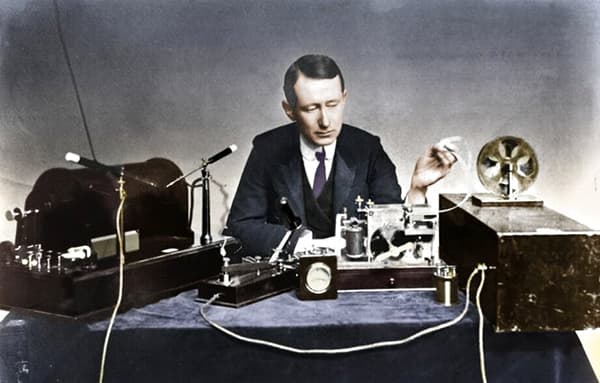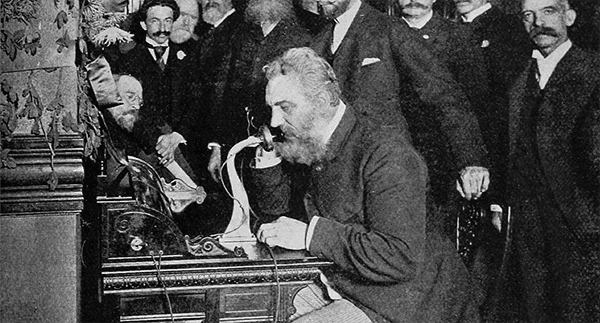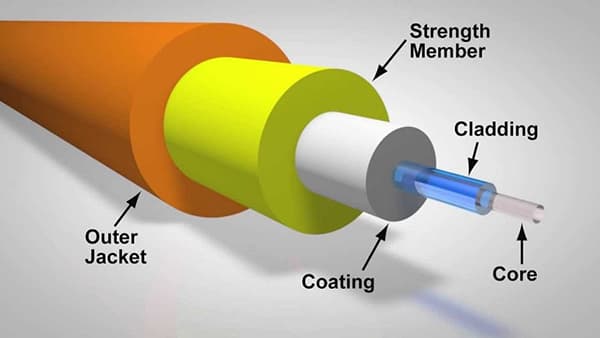5 Major Milestones in Telecommunications
Nov 1, 2021 | Home Technology
It’s easy to take for granted today that we can pick up our smartphone, tap a few soft keys, either call someone or send them a message, and slide the phone back into our pocket. And we can pull off this simple function practically anywhere in the world. But it hasn’t always been that way. Modern communication took centuries to get here.
Countless books have been written about the history of communications, from caveman wall etchings to smoke signals to the first written languages and more, so we’re going to skip ahead to the last couple of centuries and take a brief look at five major milestones that brought us to where we are today.
Telegraph

The first method of transmitting words and letters across long distances via line-of-sight was introduced in 1790 by two French inventors, the Chappe brothers, who created the semaphore system with its colored flags eventually adopted by navies worldwide. But what about sending messages beyond the horizon?
That’s where Samuel Morse comes in. In 1838, Morse discovered if he connected two transmitter and receiver units via electrical wire, he could send pulses from one to the other over great distances, including from city to city. Morse then set out to create what we now call Morse Code, a series of dots and dashes for each letter of the alphabet that could be strung together into words and phrases. The telegraph allowed towns spread hundreds of miles apart to communicate within seconds.
Radio

Scientists in the early and mid-1800s understood how electromagnetic waves operated in principle, but very few could harness them into anything useful beyond experiments in wave transmission. That all changed when an Italian inventor named Guglielmo Marconi figured out that Hertzian waves were the best medium for consistent long-distance broadcast.
Considered the father of the modern radio, Marconi developed the standard for radio transmissions in the 1890s and was honored with several local and national awards for his inventions. So if you enjoy listening to the radio in the car, you have Marconi to thank.
Telephone
We are all probably familiar with Alexander Graham Bell, inventor of the telephone. For decades, his namesake, Bell Telephone Company, was synonymous with calling friends and family across America and around the world. While the telephone wasn’t this Scottish-born genius’ only invention, it was his most famous and the one most commonly used today.

But did Bell really invent the telephone? It depends on who you ask, because while Bell was toiling over his version, another inventor, Elisha Gray (a name that likely doesn't ring a bell), was working on a similar design for transmitting voices along an electrical wire. The two men had a bit of a rivalry when they discovered they were working on the same invention. Bell finished first, however, and raced to file his patent before Gray, and thus Bell was credited with inventing the telephone, a device that changed the world.
Internet

The internet is another invention that has become ubiquitous in everyday life. It’s hard to imagine a time when it wasn’t around. Unlike many inventions that came out of the private sector, the internet started as a government project as part of the Defense Advanced Research Projects Agency (DARPA) in the 1960s. Several top scientists of the day were involved, so it’s impossible to pinpoint who was responsible for inventing the internet, but it started as a way for the government to communicate with itself through a series of networks created over the next two decades.
In 1991, the Commercial Internet eXchange was founded, laying the groundwork for the commercially available internet that we all use today. Once the internet was opened to the public, it took off, with over 86% of the world’s 7 billion people now having access to it today.
Fiber Optics

As new as fiber optic technology sounds because we identify it with high-speed internet, which is relatively new, the basics of the technology go back over 50 years. The concept of sending a signal carrying data through glass dates to the 1960s but was honed into a viable technology when researchers at the Corning Research Lab in Corning, NY, discovered how to send readable signals via glass fiber with minimal data loss. Called low-loss fiber, this new glass mixture allowed signals to be sent over hundreds of miles without losing the data. Today, fiber optics are quickly replacing old copper cable technology because they offer over 100x the bandwidth and symmetrical download and upload speeds that far outpace legacy copper cable.
Throughout history, many inventions changed the path of mankind, from the automobile to the airplane to the internet. What’s on the horizon? We don’t know yet, but it will likely be exciting!






